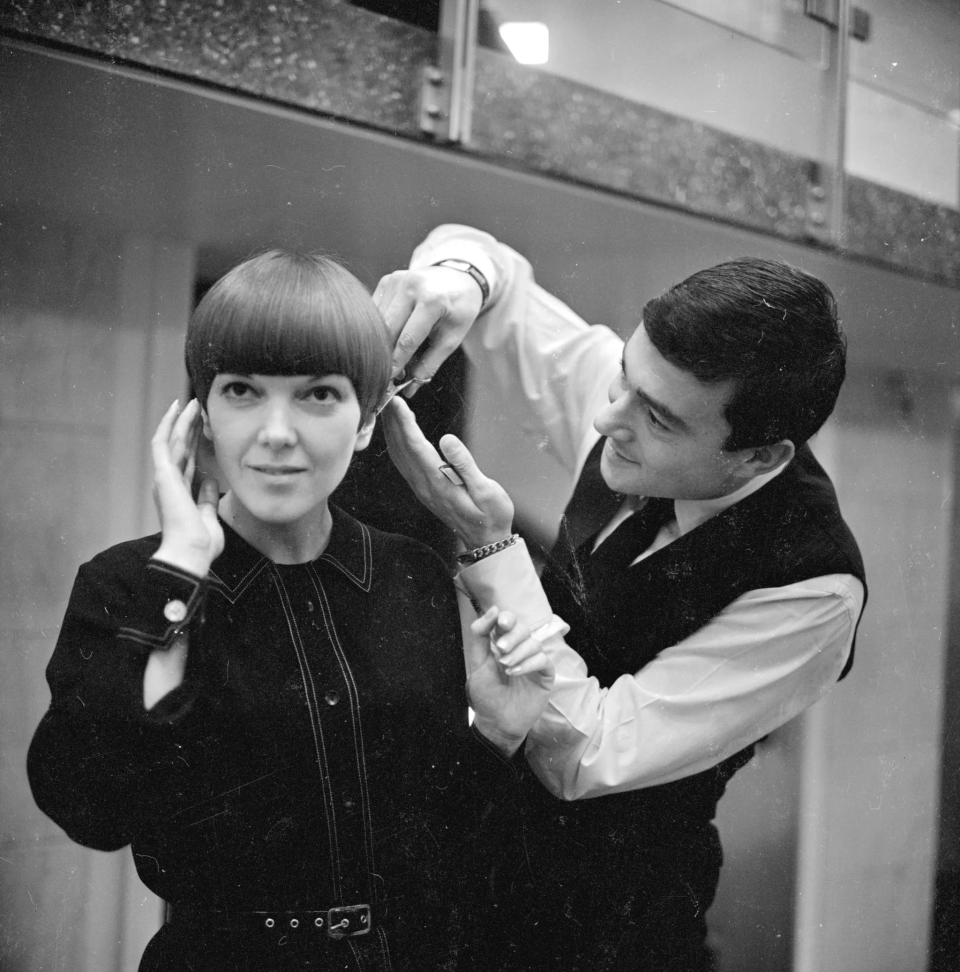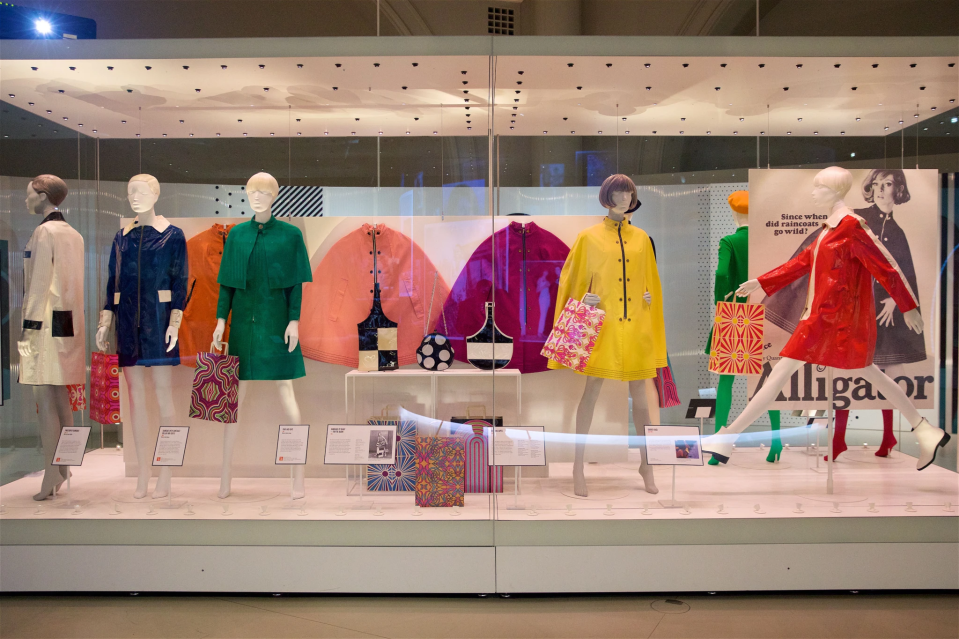Dame Mary Quant, Promoter of the Miniskirt, Dies at 93
- Oops!Something went wrong.Please try again later.

Click here to read the full article.
Dame Mary Quant, responsible for liberating women’s fashion in the ‘50s and ‘60s with her short hemlines and bold patterns, died Thursday at age 93.
Among her many accomplishments, Quant is often credited with popularizing short skirts, dubbing them “mini,” and creating hotpants, a type of short.
Quant “died peacefully at home in Surrey, U.K., this morning,” her family said in a statement to the PA news agency.
Her family added that she “was one of the most internationally recognized fashion designers of the 20th century and an outstanding innovator of the Swinging ’60s.”
Quant was born in 1934 in Blackheath, southeast London, studied art at Blackheath High School, and later attended Goldsmiths University, graduating in 1953.

Two years later, she opened Bazaar, a boutique on King’s Road. True to its name, the store sold a melange of items, from Quant’s own designs to artwork and jewelry made by her friends from university.
Frequented by stars like The Rolling Stones and Audrey Hepburn, Bazaar quickly became a hot spot thanks to its atmospheric setting paired with its revelatory items, which were a far cry from the utilitarian wartime styles of the ’40s.
Quant was honored with a blue plaque outside 138A King’s Road in London in 2019, the original site of the boutique. The plaque’s unveiling took place during London Fashion Week.
In 1958, Quant christened the miniskirt “mini,” inspired by the model car.
By 1961, Quant opened another Bazaar in Knightsbridge, which was as successful as its predecessor, prompting global demand for her designs. She exported the “London Look” to the U.S. with JCPenney in 1965, four years before The Beatles came.
By the late ‘60s, she launched the HotPant, a type of shorts and laid the groundwork for fast fashion, lifestyle branding and even streetwear trends. Mod queen Quant was about so much more than the miniskirt.
Not only did the designer embrace mass manufacturing and easy care synthetic fabrics such as PVC, Crimplene, acrylic wool and acetate, she thought far beyond clothing, developing a license-heavy lifestyle brand that came complete with lingerie, tights, footwear, accessories, costume jewelry, color cosmetics, interior designs and a Daisy toy doll range meant to rival Barbie.
The fashion designer went on to publish numerous books, her second book “Colour” was released in 1984; “Quant on Make-up” in 1986; “Classic Make up & Beauty Book” in 1996, and in 2011, her second autobiography, “Mary Quant: Autobiography,” was released.
Quant launched her cosmetics line Mary Quant Cosmetics in 1966, which still operates today. She resigned as director of Mary Quant Ltd. in 2000 following a takeover by a Japanese group.
Those deals, and her thriving wholesale business, kept the designer so busy — and prosperous — that by 1970 she had shut all three of her Bazaar retail shops in London, on the King’s Road, in Knightsbridge and on Bond Street. Her dresses weren’t cheap, either, costing double the price of ones from Marks & Spencer.
Quant’s heels were low and her bras and underpants lightweight and supportive, thanks to Lycra. She dressed customers in colored, textured tights — no garter belts there — and relegated painfully constricting girdles to history.
The designer also took the radical step of producing tailored trousers and suits, in wools meant for menswear — which she used to buy at retail from Harrods and then dye in bright colors. She stretched that menswear aesthetic into gray tweed dresses with tops like suit vests, and made blouses with oversize neckties, always poking fun at convention and looking to unleash female power.

Quant was the subject of a retrospective at the Victoria and Albert Museum in 2019 — 50 years since her last show at the museum.
The showcase explored Quant’s work between 1955 and 1975, taking a fresh look at the designer in the context of the #MeToo movement and the new momentum behind women’s rights.
“She has been sidelined because she’s not a couture designer,” Stephanie Wood told WWD in 2019, who cocurated the V&A show with Jenny Lister.
Wood said it was the right time to view Quant in the “post #MeToo era, given the fact that she liberated women from stifling rules and regulations.”
In July 2018, the V&A did a call-out on social media with a “WeWantQuant” campaign to collect rare Quant garments. They received more than 1,000 responses, whittling them down to 35 looks from 30 women, including a short dress with a frilled neckline and sleeves, and a rainbow lineup of A-line PVC raincoats and capes. All 35 items were on display with charming personal stories and photographs.
The bulk of the show was drawn from the archive of Quant.
The celebrated designer was also the subject of English actor Sadie Frost’s debut documentary “Quant” in 2021.
“It’s such a colorful story that it didn’t feel like I was doing a straight-up, factual documentary. It was about bringing out the femininity, the coquettishness, the humor and really making a stance on women’s rights and how the role of women has changed,” Frost told WWD at the time.
The documentary was presented as part of the London Film Festival.
“What Mary created over her career span of decades was so vast and should never be forgotten. For me it was a real admiration of another woman and understanding that it hadn’t always been easy for her,” Frost added.
Frost spoke to Quant through her son via various messages and got her blessing before releasing the documentary. Her son, Orlando Plunket-Greene, weighs in on the film alongside British industry heavyweights like Charlotte Tilbury, Kate Moss and British Vogue editor in chief Edward Enninful, who highlights how Quant was ahead of her time in casting models of color and shaping a new standard of beauty.
Quant received an Order of the Companion of Honour, or CH, for her outstanding achievement in British fashion from King Charles III, in his first New Year Honors list as monarch. The award is limited to just 65 people at any one time.

